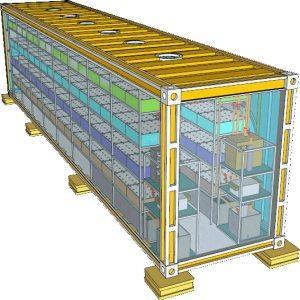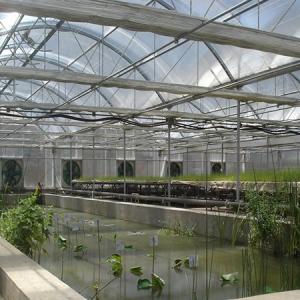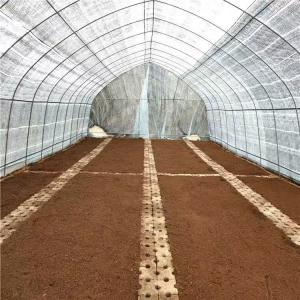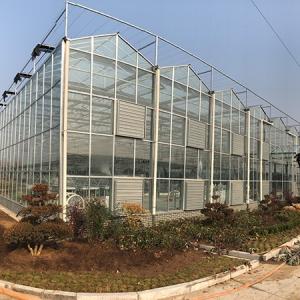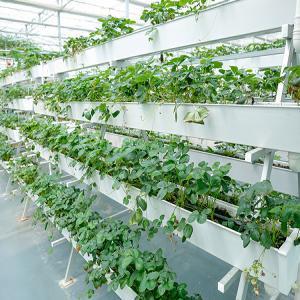Hydroponic Fodder Container Farms: Revolutionizing Livestock Feed Production in the United Arab Emirates
1. Introduction to Hydroponic Fodder Container Farms
Hydroponic fodder container farms have emerged as a revolutionary concept that is transforming livestock feed production in the United Arab Emirates (UAE). By harnessing the principles of hydroponics, these innovative farms are cultivating high-quality and nutritious animal feed in a controlled environment. In this article, we will explore the benefits, challenges, and future prospects of hydroponic fodder container farms, shedding light on their significance in the UAE's agricultural landscape.
Hydroponic fodder container farms utilize a soil-less farming technique, where plants are grown in nutrient-rich water solutions instead of traditional soil. This method enables farmers to have greater control over the growth process, ensuring optimal conditions for plant development and maximizing the nutritional value of the fodder produced.
One of the key advantages of hydroponic fodder container farms is their ability to provide superior quality feed for livestock. The controlled environment allows for precise nutrient delivery, resulting in fodder that is rich in essential vitamins, minerals, and proteins. This nutrient-dense feed promotes the health and productivity of the animals, leading to better growth rates, improved milk production in dairy cattle, and enhanced overall performance in various livestock species.
Additionally, hydroponic fodder container farms offer significant water conservation benefits. In a region like the UAE, where water scarcity is a pressing concern, this farming method proves to be highly sustainable. By utilizing recirculating water systems and optimizing irrigation techniques, hydroponic fodder farms minimize water wastage, reducing the strain on local water resources. This environmentally friendly approach aligns with the UAE's vision for sustainable agriculture and contributes to the conservation of precious water supplies.
However, hydroponic fodder container farming does come with its own set of challenges. The initial investment costs can be relatively high due to the infrastructure required for setting up the hydroponic systems, including climate-controlled containers, lighting equipment, and water management systems. Moreover, technical expertise is essential to ensure the proper functioning of the hydroponic systems and to address any issues that may arise during the production process. Adequate training and knowledge transfer are crucial for farmers to harness the full potential of this farming method.
Looking ahead, the future prospects for hydroponic fodder container farms in the UAE are promising. As the demand for high-quality and sustainable livestock feed continues to rise, hydroponic systems provide a viable solution to meet these needs. Ongoing research and development efforts are focused on optimizing the efficiency and productivity of hydroponic fodder production, adapting the technology to local farming conditions, and exploring new advancements in the field.
In conclusion, hydroponic fodder container farms are revolutionizing livestock feed production in the UAE. With their ability to deliver nutrient-rich feed, conserve water resources, and promote sustainable agriculture, these farms are driving positive change in the livestock industry. By embracing this innovative farming method, the UAE is taking significant steps towards ensuring food security, environmental sustainability, and the overall well-being of its livestock sector.
2. The Advantages of Hydroponic Fodder Container Farms
Hydroponic fodder farms, also known as container farms, offer numerous advantages in livestock feed production. These innovative farming methods create a controlled environment that ensures optimal plant growth, resulting in superior quality feed for livestock. With precise nutrient delivery, water conservation, and year-round production capabilities, hydroponic fodder farms provide sustainable and efficient solutions for feed production. One of the significant advantages of hydroponic fodder farms is the controlled environment they provide for optimal plant growth. By eliminating external factors such as soil variability, pests, and weather fluctuations, these farms can optimize plant health and development. The controlled environment allows for precise management of temperature, humidity, lighting, and nutrient levels, creating an ideal growth environment for fodder crops. As a result, the plants thrive and produce high-quality feed for livestock.
Hydroponic fodder farms also offer superior quality feed for livestock. The controlled environment and precise nutrient delivery enable farmers to provide an optimal balance of essential nutrients to the plants. This results in fodder that is rich in vitamins, minerals, proteins, and other vital components necessary for animal health and productivity. Livestock fed with hydroponic fodder often exhibit improved growth rates, enhanced immune function, and overall better well-being.
Precise nutrient delivery is another advantage of hydroponic fodder farms. Through the use of nutrient-rich solutions, farmers can provide the plants with a well-balanced diet tailored to their specific needs at each growth stage. This level of precision ensures that the plants receive the right amount of nutrients, promoting optimal growth and nutrient absorption. As a result, the fodder produced is nutritionally dense, providing animals with the necessary nutrients for their health, development, and performance.
Water conservation is a significant benefit of hydroponic fodder farms. Compared to traditional soil-based agriculture, hydroponic systems require significantly less water to produce the same amount of feed. The closed-loop irrigation systems used in these farms recirculate and reuse water, minimizing wastage and reducing overall water consumption. This water conservation aspect is particularly crucial in regions where water scarcity is a concern. Hydroponic fodder farms offer a sustainable solution that helps conserve precious water resources.
Finally, hydroponic fodder farms provide year-round production capabilities. By controlling the environmental conditions within the farms, farmers can cultivate fodder crops consistently throughout the year. This continuous production ensures a reliable and consistent supply of feed for livestock, reducing dependency on external factors such as weather patterns and seasonal variations. Year-round production contributes to the stability and sustainability of livestock farming operations.
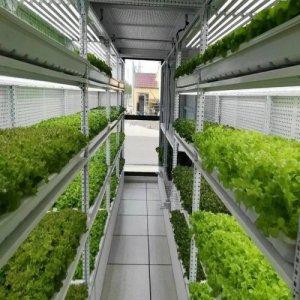
2.1 Enhanced Nutritional Value of Hydroponic Fodder
Hydroponically grown fodder offers enhanced nutritional value compared to traditional feed options. In this section, we will explore the scientific evidence supporting this claim, highlighting the increased levels of vitamins, minerals, and proteins found in hydroponic fodder. By providing animals with a well-balanced diet, hydroponic fodder promotes their health, growth, and productivity.
Scientific studies have shown that hydroponic fodder exhibits higher levels of essential vitamins, such as vitamin A, vitamin C, and vitamin E, compared to conventionally grown feed. These vitamins play crucial roles in animal health, acting as antioxidants, supporting immune function, and contributing to overall growth and well-being. By incorporating hydroponic fodder into the diet of livestock, farmers can ensure that their animals receive an abundant supply of these essential vitamins.
In addition to vitamins, hydroponic fodder is also rich in minerals. Studies have demonstrated increased levels of minerals such as calcium, iron, and zinc in hydroponically grown feed. These minerals are essential for various physiological processes in animals, including bone development, oxygen transport, and enzyme function. By providing hydroponic fodder to livestock, farmers can contribute to the animals' mineral intake, promoting optimal health and performance.
Furthermore, hydroponic fodder contains higher levels of proteins compared to traditional feed options. Proteins are the building blocks of life and play a critical role in the growth and development of animals. Hydroponic fodder provides a rich source of high-quality proteins, which are essential for muscle development, enzyme production, and other vital biological functions. By incorporating hydroponic fodder into the diet, livestock farmers can ensure that their animals receive the necessary proteins for optimal growth and productivity.
The enhanced nutritional value of hydroponic fodder can have significant benefits for livestock. Animals fed with hydroponic fodder are likely to experience improved overall health, increased weight gain, and enhanced reproductive performance. Additionally, the well-balanced diet provided by hydroponic fodder can help prevent nutrient deficiencies and associated health issues, ensuring the animals' well-being.
In conclusion, hydroponic fodder offers enhanced nutritional value compared to traditional feed options. With higher levels of vitamins, minerals, and proteins, hydroponic fodder provides animals with a well-balanced diet that promotes their health, growth, and productivity. By incorporating hydroponic fodder into the feeding regimen, livestock farmers can contribute to the overall well-being and success of their animals.
2.2 Water Conservation and Environmental Sustainability Benefits of Hydroponic Fodder Farms
One of the significant advantages of hydroponic fodder farms is their water conservation potential, making them an environmentally sustainable choice. In this section, we will discuss how hydroponic fodder farms use significantly less water compared to traditional agricultural practices. By minimizing water consumption and reducing the strain on local water resources, hydroponic fodder farms contribute to a greener and more sustainable future.
Hydroponic fodder farms are designed to maximize water efficiency. Unlike traditional soil-based agriculture, which requires substantial amounts of water to irrigate the crops, hydroponic systems utilize water in a closed-loop system. This closed-loop system recirculates and reuses water, significantly reducing overall water consumption. The water is carefully monitored and supplied directly to the plant roots, ensuring minimal waste and efficient uptake by the plants.
The water conservation potential of hydroponic fodder farms is particularly important in regions where water scarcity is a concern, such as arid or drought-prone areas. By minimizing water consumption, hydroponic fodder farms help alleviate the strain on local water resources. This sustainable approach to water usage is in line with the growing need for responsible and efficient agricultural practices.
Moreover, hydroponic fodder farms can be designed to incorporate water-saving technologies. These technologies include automated irrigation systems, sensors for monitoring soil moisture levels, and precise nutrient delivery systems. By utilizing these technologies, farmers can optimize water usage, ensuring that the plants receive the necessary moisture while minimizing water waste.
Another environmental sustainability benefit of hydroponic fodder farms is the reduction in the use of fertilizers and pesticides. In traditional agriculture, fertilizers and pesticides are often applied in large quantities to compensate for nutrient deficiencies and combat pests and diseases. However, in hydroponic systems, the controlled environment and nutrient-rich solutions reduce the need for excessive chemical inputs. This leads to a reduction in the release of harmful substances into the environment, contributing to the preservation of soil health and the overall ecosystem.
Additionally, hydroponic fodder farms can be established in urban or peri-urban areas, minimizing the need for long-distance transportation of feed and reducing carbon emissions associated with transportation. By bringing food production closer to the point of consumption, hydroponic fodder farms support local and sustainable food systems.
In conclusion, hydroponic fodder farms offer significant water conservation and environmental sustainability benefits. Through their efficient use of water, reduced reliance on chemical inputs, and potential for localized production, hydroponic systems contribute to a greener and more sustainable future. By embracing this innovative farming method, we can address the challenges of water scarcity, reduce environmental impact, and promote responsible agricultural practices.
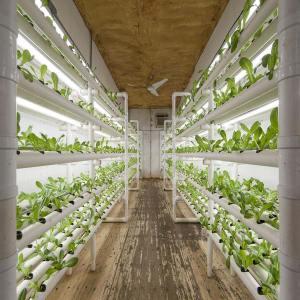
3. Overcoming Challenges in Hydroponic Fodder Production
While hydroponic fodder container farms offer immense potential, they also come with certain challenges that need to be overcome for successful production. In this section, we will delve into these challenges, including the initial investment costs, technical expertise required, and operational considerations. By understanding and addressing these obstacles, farmers can harness the full benefits of hydroponic fodder production.
One of the primary challenges in hydroponic fodder production is the initial investment costs. Setting up a hydroponic fodder farm requires significant investment in infrastructure, equipment, and systems. This includes climate-controlled containers, lighting systems, irrigation systems, nutrient delivery systems, and automation technology. The costs associated with these investments can be a barrier for some farmers. However, it is important to consider the long-term benefits and potential returns on investment that hydroponic fodder production can offer.
Another challenge is the requirement for technical expertise. Operating a hydroponic fodder farm involves understanding the principles of hydroponics, managing complex systems, and troubleshooting any issues that may arise. Farmers need to have knowledge and skills in areas such as water and nutrient management, climate control, and plant physiology. Training and education programs can help farmers acquire the necessary expertise and ensure the successful operation of their hydroponic systems.
Operational considerations are also important in hydroponic fodder production. These include proper monitoring of environmental conditions, maintaining cleanliness and hygiene in the growing environment, and managing pests and diseases effectively. A well-designed operational plan, including regular maintenance, monitoring, and a proactive approach to preventing issues, is essential for optimal production and crop health.
Furthermore, sourcing high-quality seeds or sprouts for hydroponic fodder production can be a challenge. Farmers need to ensure that they have a reliable and consistent supply of viable seeds or sprouts that are suitable for hydroponic cultivation. Establishing relationships with trusted suppliers or developing in-house seed production capabilities can help overcome this challenge.
To overcome these challenges, farmers can seek assistance from agricultural experts, hydroponic consultants, or join local farming communities and associations. These resources can provide valuable guidance, technical support, and knowledge-sharing opportunities. Collaboration with other hydroponic fodder producers can also help farmers learn from each other's experiences and find innovative solutions to common challenges.
In conclusion, while hydroponic fodder production presents challenges, addressing these obstacles is crucial for realizing the full benefits of this farming method. By overcoming the initial investment costs, acquiring the necessary technical expertise, and implementing effective operational strategies, farmers can successfully establish and operate hydroponic fodder farms. With careful planning, education, and support, hydroponic fodder production can become a viable and rewarding venture, offering sustainable and high-quality feed for livestock.
3.1 Initial Investment Costs and Return on Investment (ROI) of Hydroponic Fodder Container Farm
Implementing a hydroponic fodder container farm requires a significant initial investment. In this section, we will discuss the various components and expenses involved in setting up such a farm, including infrastructure, hydroponic systems, and seed costs. Additionally, we will explore the potential return on investment (ROI) for farmers, taking into account factors such as increased feed quality, reduced feed expenses, and market demand.
The initial investment costs for a hydroponic fodder container farm can vary depending on several factors, including the farm's scale and location. Key components of the investment include:
1. Infrastructure Setup: This includes the construction or acquisition of climate-controlled containers or greenhouses, where the hydroponic fodder will be grown. Costs may involve purchasing or leasing suitable land, building or modifying structures, and installing necessary utilities.
2. Hydroponic Systems: Hydroponic systems form the backbone of a successful fodder farm. This includes equipment such as grow trays, irrigation systems, nutrient delivery systems, lighting fixtures, and climate control mechanisms. The costs will depend on the size of the farm, the complexity of the systems, and the desired automation level.
3. Seeds or Sprouts: Acquiring high-quality seeds or sprouts is crucial for hydroponic fodder production. Farmers will need to invest in a reliable source of seeds or sprouts suitable for hydroponic cultivation. Depending on the chosen fodder crop, these costs can vary.
4. Operational Expenses: Ongoing operational expenses may include labor costs, energy costs for lighting and climate control, water usage, nutrient solutions, and maintenance of the systems. These expenses should be factored into the overall investment considerations.
While the initial investment costs can be substantial, hydroponic fodder container farms offer the potential for a favorable return on investment. The ROI can be realized through various factors:
1. Increased Feed Quality: Hydroponic fodder production enables farmers to grow highly nutritious feed that is rich in vitamins, minerals, and proteins. This improved feed quality can lead to healthier and more productive livestock, potentially commanding higher prices in the market.
2. Reduced Feed Expenses: By producing fodder on-site, farmers can reduce or eliminate the need to purchase expensive commercial feed. This can result in significant cost savings over time, positively impacting the farm's profitability.
3. Market Demand: The demand for high-quality and sustainable livestock products is on the rise. Hydroponically grown fodder aligns with these market trends, offering a competitive advantage in meeting consumer demands for premium-quality animal products. This increased market demand can contribute to a favorable ROI.
4. Seasonal Independence: Hydroponic fodder production allows for year-round cultivation, reducing dependence on seasonal variations in feed availability. This consistent supply of feed can help farmers maintain livestock productivity throughout the year and potentially enhance profitability.
It is important to note that the actual ROI will depend on several factors, including the efficiency of the farm's operations, market conditions, and management practices. Conducting a comprehensive financial analysis and consulting with experts can provide a clearer understanding of the potential ROI and help in making informed investment decisions.
In conclusion, implementing a hydroponic fodder container farm requires a significant initial investment. However, through increased feed quality, reduced feed expenses, market demand, and seasonal independence, hydroponic fodder production offers the potential for a favorable return on investment. Careful planning, cost analysis, and market assessment are essential for farmers considering venturing into this innovative farming method.
3.2 Technical Expertise and Training of Hydroponic Fodder Container Farm
Operating a hydroponic fodder container farm requires a certain level of technical expertise. In this section, we will highlight the importance of training and education in hydroponics, guiding farmers on essential skills, best practices, and troubleshooting methods. By acquiring the necessary knowledge, farmers can effectively manage their hydroponic systems, ensuring optimal fodder production.
Technical expertise is crucial for the successful operation of hydroponic fodder container farms. Familiarity with the principles and practices of hydroponics is necessary to create an environment that promotes healthy plant growth and maximizes fodder quality. Farmers should strive to develop the following skills:
1. Nutrient Management: Understanding the specific nutrient requirements of different fodder crops and the proper formulation and delivery of nutrient solutions is essential. Farmers need to monitor and adjust nutrient levels to ensure optimal plant growth and nutrition.
2. Water Management: Efficient water management is critical in hydroponic systems. Farmers should learn about water quality, irrigation techniques, and the importance of maintaining appropriate moisture levels. This includes understanding the recirculation and filtration systems to prevent nutrient imbalances or waterborne diseases.
3. Climate Control: Hydroponic fodder farms require controlled environmental conditions to mimic the ideal growing conditions for plants. Farmers need to learn about temperature, humidity, and lighting requirements, as well as how to manage climate control systems effectively.
4. Pest and Disease Management: Implementing proactive pest and disease management strategies is vital to protect the crops. Farmers should learn about common pests and diseases in hydroponic systems, as well as integrated pest management techniques to minimize chemical usage and promote plant health.
Training and education programs play a crucial role in equipping farmers with the necessary technical expertise. These programs cover various aspects of hydroponic fodder production, including theory, hands-on experience, and practical demonstrations. They provide farmers with a solid foundation of knowledge and empower them to make informed decisions in managing their hydroponic systems.
Training programs often cover topics such as system setup and maintenance, nutrient management, pest and disease control, and troubleshooting techniques. Farmers learn about best practices in hydroponic fodder production, including seed selection, germination, transplanting, and harvest methods. They also gain insights into optimizing resource utilization, improving efficiency, and adapting to specific farming conditions.
Collaboration with experts and hydroponic consultants is another valuable resource for technical expertise. Engaging with experienced professionals can provide farmers with personalized guidance and support in setting up and operating their hydroponic fodder farms. Networking with other hydroponic farmers through local farming communities and associations can also foster knowledge sharing and problem-solving.
In conclusion, technical expertise and training are essential for the successful operation of hydroponic fodder container farms. By acquiring the necessary knowledge in hydroponics, farmers can effectively manage their systems, optimize nutrient delivery, monitor environmental conditions, and implement best practices. Continuous learning, hands-on experience, and collaboration with experts contribute to the success and productivity of hydroponic fodder production.
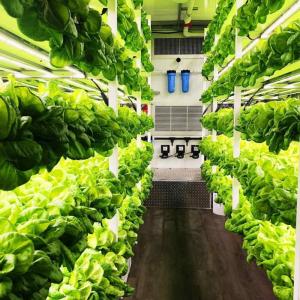
4. The Future of Hydroponic Fodder Container Farms in the UAE
The future prospects for hydroponic fodder container farms in the United Arab Emirates (UAE) are promising. In this section, we will explore the potential expansion of this technology and its role in ensuring food security and sustainable livestock farming practices. Additionally, we will discuss ongoing research and development efforts aimed at optimizing hydroponic systems, maximizing yields, and adapting the technology to regional farming conditions.
The UAE has shown a strong commitment to achieving food security and promoting sustainable agricultural practices. Hydroponic fodder container farms align perfectly with these objectives. As the demand for high-quality and sustainable livestock products continues to rise, the adoption of hydroponic systems for fodder production offers a viable solution.
One of the key advantages of hydroponic fodder container farms is their ability to provide a controlled environment for optimal plant growth. This controlled environment enables farmers to overcome challenges such as limited arable land, water scarcity, and extreme weather conditions. As a result, hydroponic fodder farms can operate year-round, ensuring a consistent supply of high-quality feed for livestock.
Furthermore, hydroponic fodder production can significantly reduce the UAE's reliance on imported feed, enhancing food security and reducing the carbon footprint associated with long-distance transportation. By producing fodder locally, the UAE can strengthen its self-sufficiency in feed production, ensuring a stable and secure supply for the growing livestock sector.
The future of hydroponic fodder container farms in the UAE also involves ongoing research and development efforts. Researchers, agricultural experts, and farmers are collaborating to optimize hydroponic systems, improve efficiency, and increase yields. This includes exploring advanced technologies for climate control, nutrient management, and automation to enhance productivity and resource utilization.
Additionally, efforts are underway to adapt hydroponic systems to the unique farming conditions of the UAE. This includes studying the specific nutrient requirements of local fodder crops, developing suitable cultivation techniques, and identifying crop varieties that are well-suited to the climate and environmental factors of the region. These initiatives aim to maximize the performance of hydroponic fodder farms and further increase the quality and quantity of feed produced.
The UAE government and various agricultural organizations are actively promoting and supporting the adoption of hydroponic fodder container farms. They provide financial incentives, training programs, and technical support to farmers interested in implementing this innovative farming method. This proactive approach demonstrates the commitment to advancing sustainable agriculture and ensuring the long-term success of hydroponic fodder production in the country.
In conclusion, the future of hydroponic fodder container farms in the UAE looks promising. These farms play a crucial role in ensuring food security, reducing dependency on imported feed, and promoting sustainable livestock farming practices. Ongoing research and development efforts, along with government support, will further optimize hydroponic systems and adapt them to local farming conditions. By embracing this technology, the UAE is taking significant steps towards achieving its agricultural goals and securing a sustainable future for the livestock sector.
5. Conclusion
In conclusion, hydroponic fodder container farms represent a revolutionary approach to livestock feed production in the United Arab Emirates. By leveraging the benefits of hydroponics, these farms offer enhanced nutritional value, water conservation, and year-round production capabilities. The controlled environment of hydroponic systems ensures optimal plant growth, resulting in superior quality feed for livestock. The precise nutrient delivery in hydroponic fodder production promotes the animals' health, growth, and productivity, leading to improved overall performance in various livestock species.
Hydroponic fodder container farms also contribute to water conservation, a crucial aspect in a region like the UAE where water scarcity is a concern. By utilizing closed-loop irrigation systems and minimizing water wastage, these farms reduce the strain on local water resources and align with sustainable agriculture practices. The water efficiency of hydroponic systems makes them an environmentally friendly choice for feed production.
Furthermore, hydroponic fodder container farms offer year-round production capabilities, overcoming seasonal limitations and ensuring a consistent supply of feed for livestock. This continuous production allows farmers to maintain productivity and meet the demands of the market throughout the year. The independence from seasonal variations in feed availability adds stability to the livestock farming industry.
While hydroponic fodder container farms do face challenges such as initial investment costs and the need for technical expertise, the future prospects for this innovative farming method in the UAE are promising. Ongoing research and development efforts focused on optimizing efficiency and productivity, as well as adapting the technology to local farming conditions, will contribute to the growth and success of hydroponic fodder production.
Overall, hydroponic fodder container farms have the potential to transform the livestock farming industry in the UAE. With their enhanced nutritional value, water conservation benefits, and year-round production capabilities, these farms offer a sustainable and efficient solution to meet the increasing demand for high-quality livestock feed. By embracing this revolutionary approach, the UAE can enhance food security, promote environmental sustainability, and lead the way in innovative agricultural practices.

